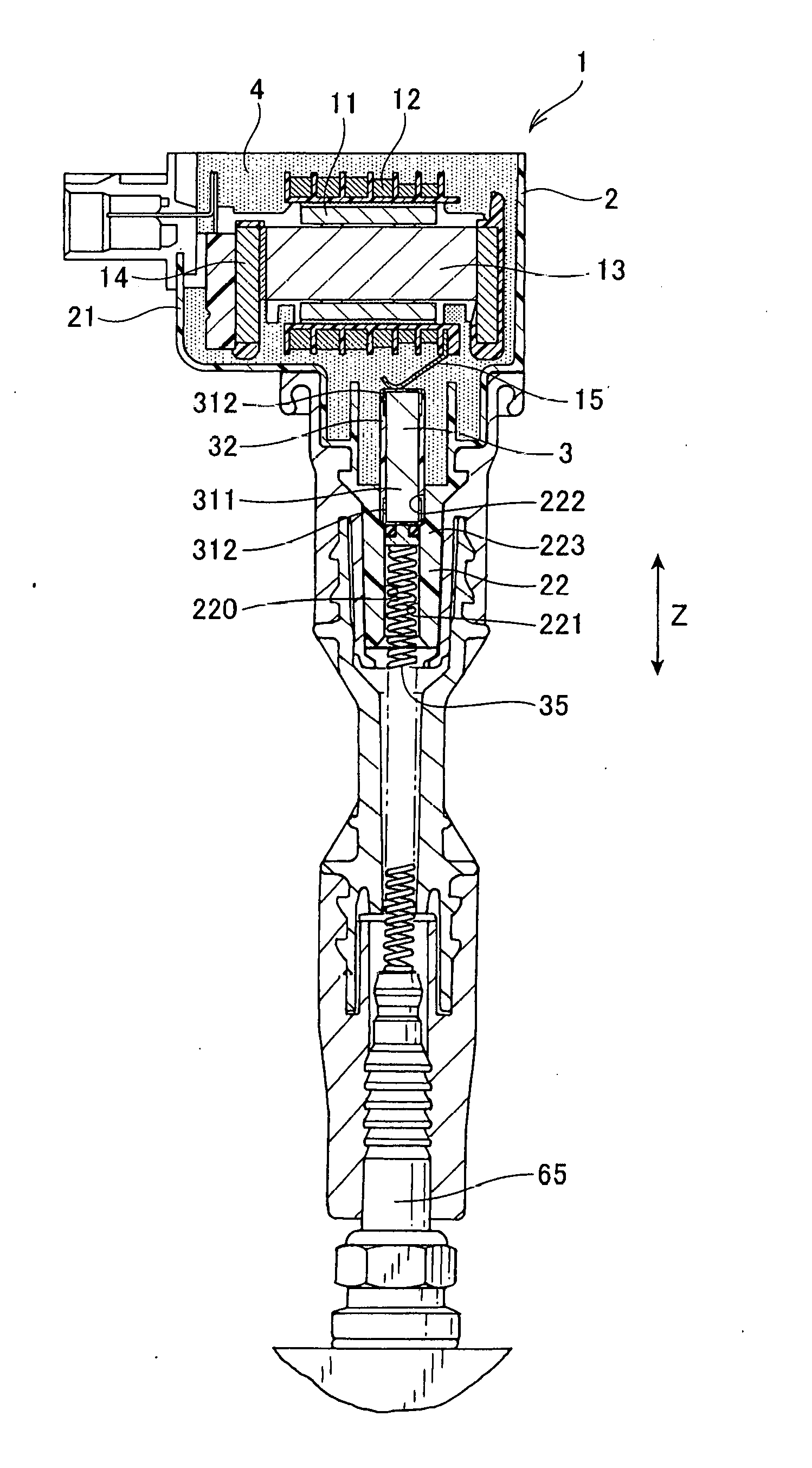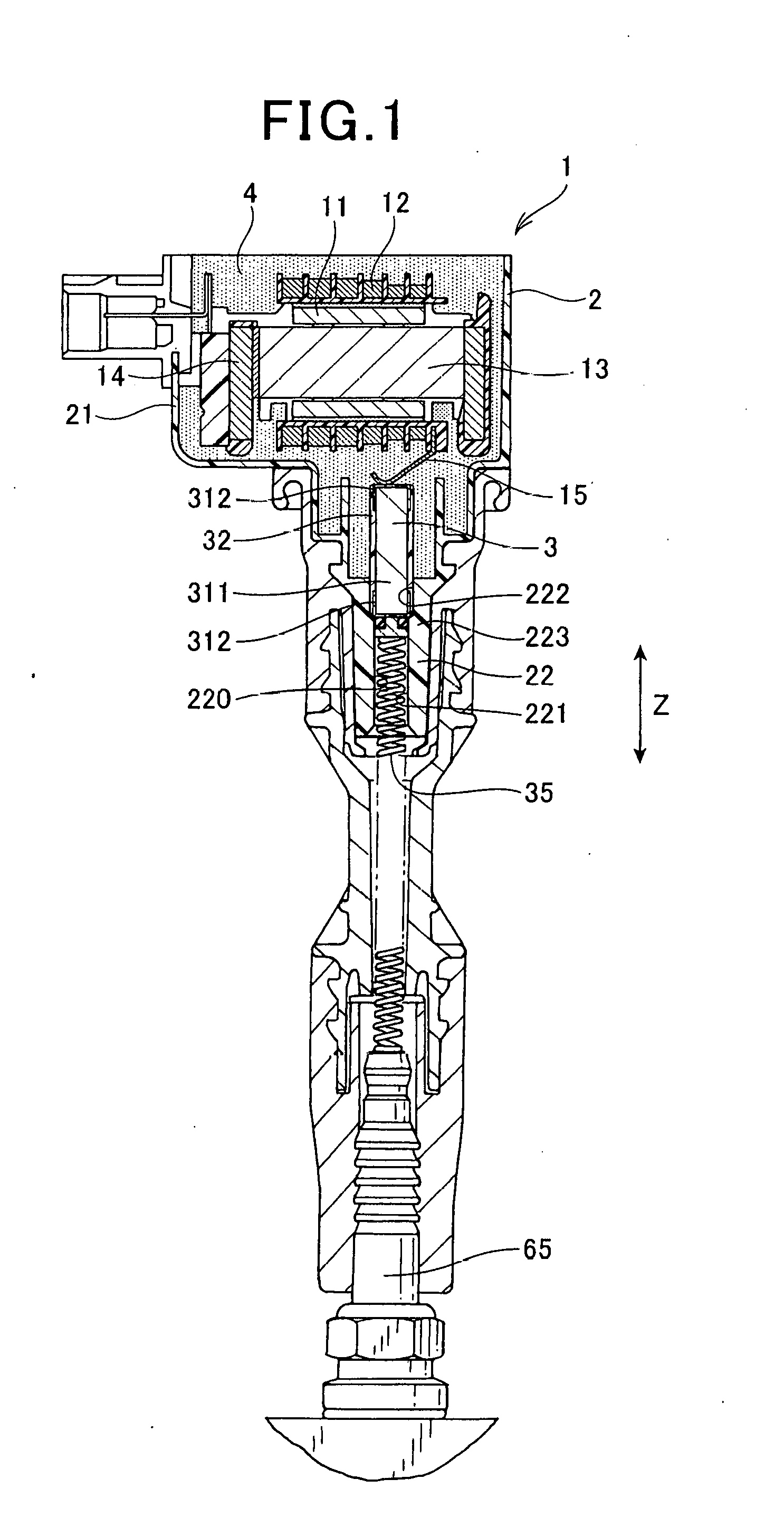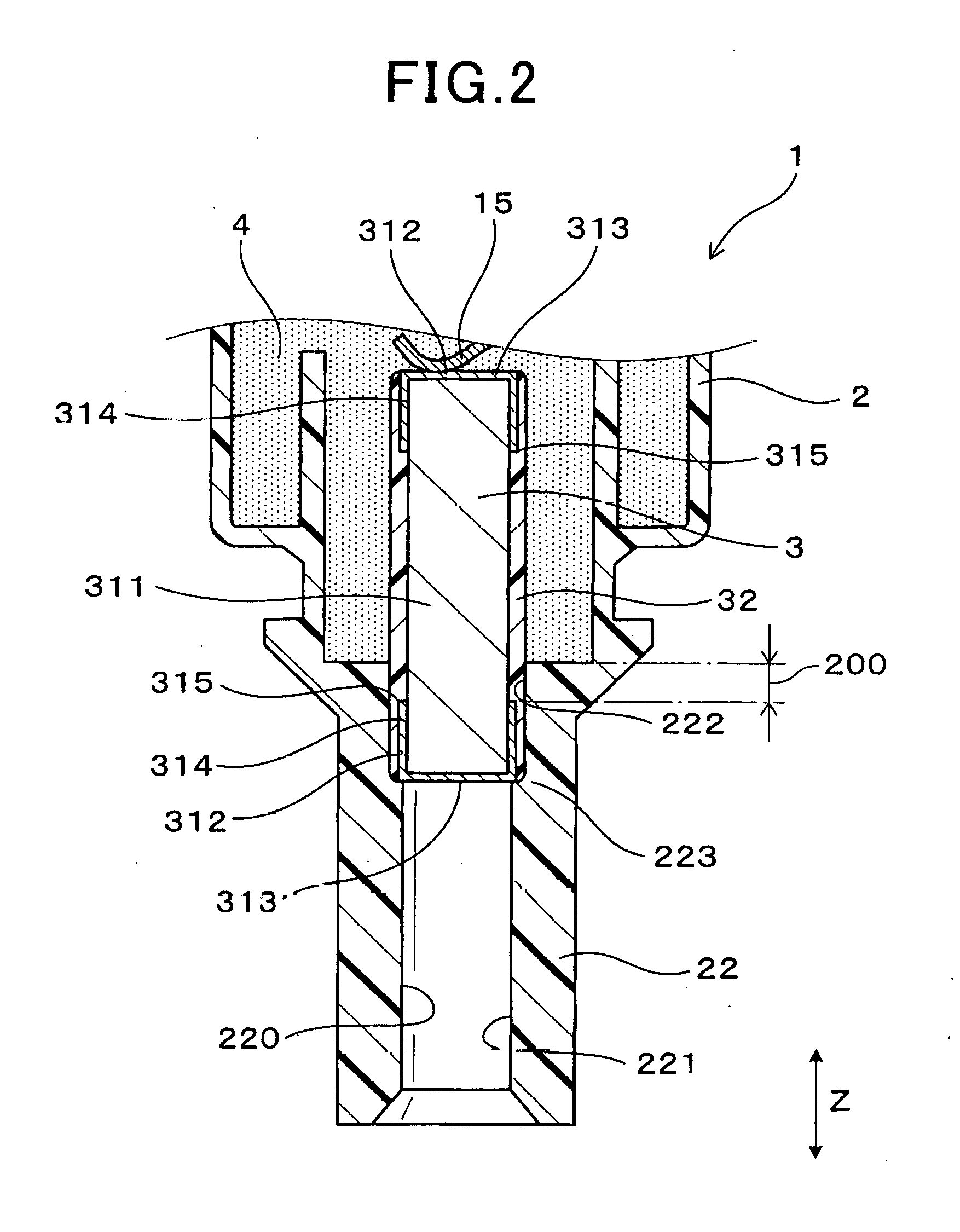Ignition coil for internal combustion engine
a technology for internal combustion engines and ignition coils, which is applied in the direction of ignition safety means, machines/engines, spark plugs, etc., can solve the problems of reduced number of ignition coil parts, escape of resin outside the case, damage or breakage of the case, etc., and achieves easy control, high accuracy of diameter, and minimizing mechanical stress
- Summary
- Abstract
- Description
- Claims
- Application Information
AI Technical Summary
Benefits of technology
Problems solved by technology
Method used
Image
Examples
first embodiment
[0024]Referring to the drawings, wherein like reference numbers refer to like parts in several views, particularly to FIGS. 1 to 5, there is shown an ignition coil 1 for internal combustion engine according to the first embodiment.
[0025]The ignition coil 1, as clearly illustrated in FIG. 1, includes the primary coil 11 and the secondary coil 12 which are magnetically coupled together, the case 2, the resistor 3, and the filled resin 4. The case 2 includes the case body 21 in which the primary coil 11 and the secondary coil 12 are disposed and the high-voltage tower 22 which is of a tubular shape and extends from the case body 21. The resistor 3 is tightly fit in the high-voltage tower 22 and electrically joined to the secondary coil 12. The filled resin 4 which will also be referred to as a resinous filler below is packed in the case body 21 to hermetically seal the primary coil 11 and the secondary coil 12. The resistor 3, as illustrated in FIGS. 1 to 5, has a resinous coating 32 w...
second embodiment
[0052]FIG. 8 illustrates the ignition coil 1 according to the second embodiment.
[0053]The resistor 3 has a portion of the length of the resinous coating 32 which is located between the electrode caps 312 opposed to each other in the axial direction Z and which is fit in the high-voltage tower 22. In other words, the resistor 3 is press-fit at a portion thereof unoccupied by the electrode caps 312 in the high-voltage tower 22 through the resinous coating 32.
[0054]The resinous coating 32 is made up of two small-diameter portions 322 and a large-diameter portion 323 disposed between the small-diameter portions 322. The small-diameter portions 322 are opposed to each other in the axial direction Z and cover the respective electrode caps 312. The small-diameter portions 322 will also be referred to as coating end portions below. The large-diameter portion 323 bulges radially from the small-diameter portions 322. The small-diameter portions 322 and the large-diameter portions 323 cover th...
third embodiment
[0061]FIG. 9 illustrates the ignition coil 1 according to the third embodiment.
[0062]The resinous coating 32 of the ignition coil 1 of this embodiment has a positioner324 which works to position the resistor 3 relative to the high-voltage tower 22 in the axial direction Z. The through hole 220 of the high-voltage tower 22 is shaped to have an inner diameter kept constant in the axial direction Z.
[0063]The resinous coating 32, like in the second embodiment, includes two small-diameter portions 322 and the large-diameter portion 323. The resinous coating 32 also includes the cylindrical positioner 324 which bulges radially from the large-diameter portion 323. The positioner 324 is formed on a central portion of a length of the large-diameter portion 323 extending in the axial direction Z.
[0064]The large-diameter portion 323 has an outer diameter slightly greater than the inner diameter of the through hole 220 before the resistor 3 is installed in the high-voltage tower 22. The positio...
PUM
| Property | Measurement | Unit |
|---|---|---|
| voltage | aaaaa | aaaaa |
| circumference | aaaaa | aaaaa |
| size | aaaaa | aaaaa |
Abstract
Description
Claims
Application Information
 Login to View More
Login to View More - R&D
- Intellectual Property
- Life Sciences
- Materials
- Tech Scout
- Unparalleled Data Quality
- Higher Quality Content
- 60% Fewer Hallucinations
Browse by: Latest US Patents, China's latest patents, Technical Efficacy Thesaurus, Application Domain, Technology Topic, Popular Technical Reports.
© 2025 PatSnap. All rights reserved.Legal|Privacy policy|Modern Slavery Act Transparency Statement|Sitemap|About US| Contact US: help@patsnap.com



